#antinous statue
Text

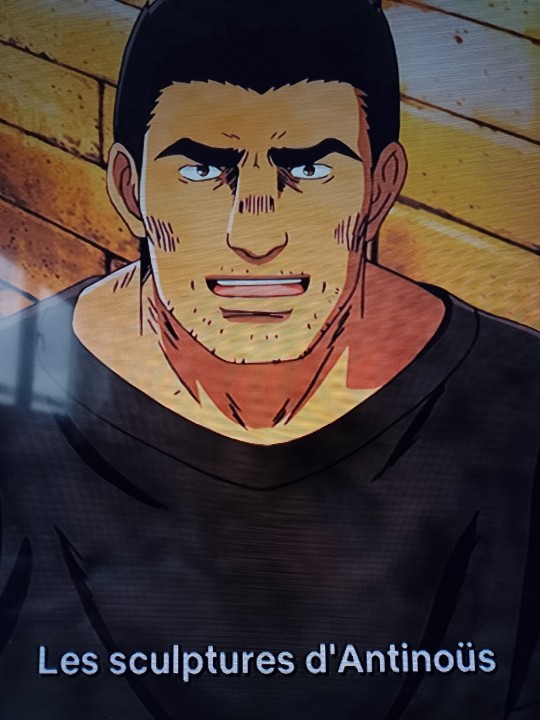

Synchronicity about Antinoüs (on 23th.1.23) which is also Noumenia in the Calendar I follow!) as I was watching Thermae Romae.
Just the day I planned to start..
23's!
#diary#journal#january 23#january 2023#antinous#antinous the liberator#gay pagan#gay polytheist#religio antinoi#cult of antinous#antinous the god#antinous agathodaimon#antinous statue#thermae romae#anime#number 23#23#23 skidoo#psychic youth#chaos#gay#lgbtqia+#queer#queer god#gay god
4 notes
·
View notes
Text
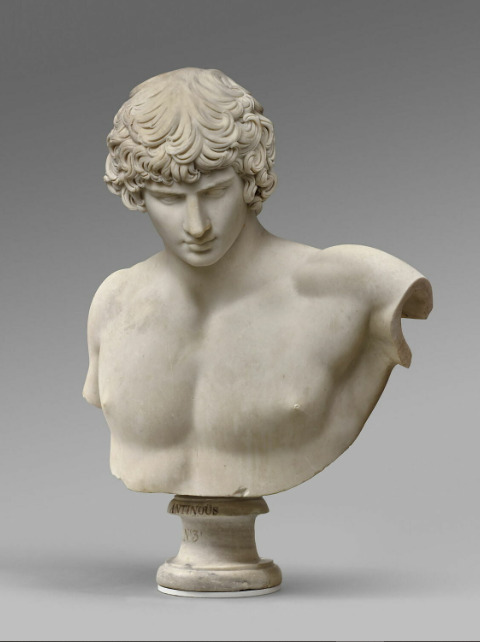
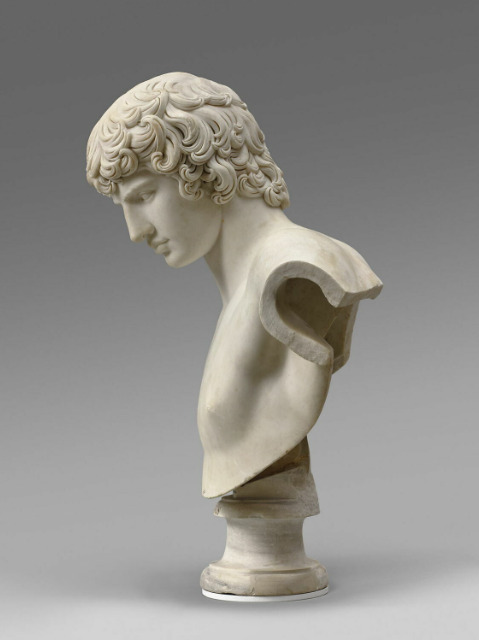
Antinous, XVIII century
#louvre museum#antinous#art history#art#aesthethic#xviii century#ancient rome#roman empire#emperor hadrian#hadrian#marble#bust#statue#homoerotic art#gay history#antiquity
229 notes
·
View notes
Text
"The body and face of this sculpture are in idealized youth, with plump cheeks and round face, and his hair is usually unkempt..his youthful appearance, large eyes, pouting lips, and layered locks of hair over his forehead are some of the iconography that can be used to identify him"
^ this quote is genuinely still fucking plaguing me. THIS IS LITERALLY SEB???? LIKE LITERALLY 2010 SEB SPECIFICALLY????? It is actually fucking me up how it is literally quintessentially Seb. Like big eyes...plump cheeks and round face...unkempt hair...pouty lips...okay okay okay!!!! And that Antinous is basically the peak perfection of pretty boy from that time, I'm like, yeah that's Seb to me 🥹🥹🤧🤧
But god the "youthful appearance, big eyes, pouting lips, and layered locks of hair over his forehead" Does that quote not evoke pictures like these in your head???????


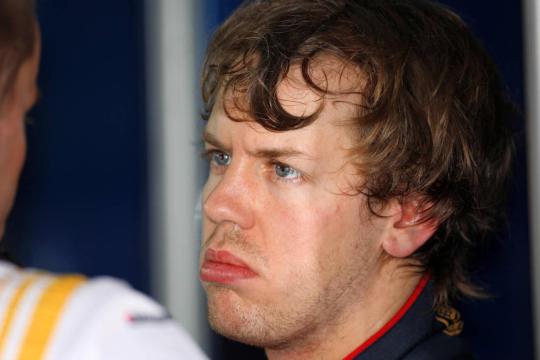




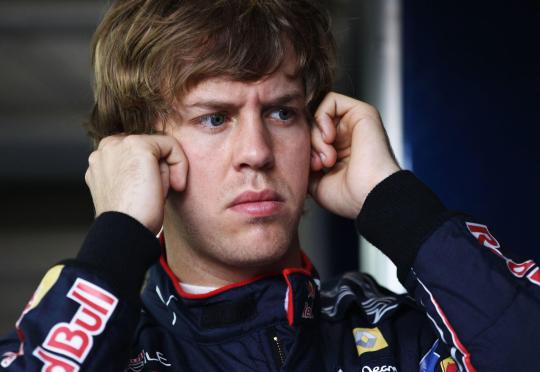


I feel so unwell about it 😭😭 I am going through it 😭😭
#in march i think i compared seb to the david#which i still think is just as good a comparison#but this makes me infinitely more insane#bcs the david one was more just about looks and so is this one#but the fact that theres so many statues of Antinous and his image is so consistent and perfectly matches seb??? okay.#and also in that post i did compare seb to an antinous statue as well hahaha#but i think the statues i picked for the recent drawing i did were a lot closer#basically: seb is a masterpiece. a piece of art. to me.#but i really like making historical comparisons(as you well know by now) but gah when it fits so perfectly like this#it makes me emo for some reason 😭😭😭#i think boy king is still my fav au and i always feel like a maniac abt all that historical basis#but this one just gaahhhhh like hes just a pretty boy 🥹 the prettiest boy#lmfao i come back from the race wknd and im like yep back to normal procedures: crying over seb#catie.rambling.txt#sebastian vettel
186 notes
·
View notes
Text


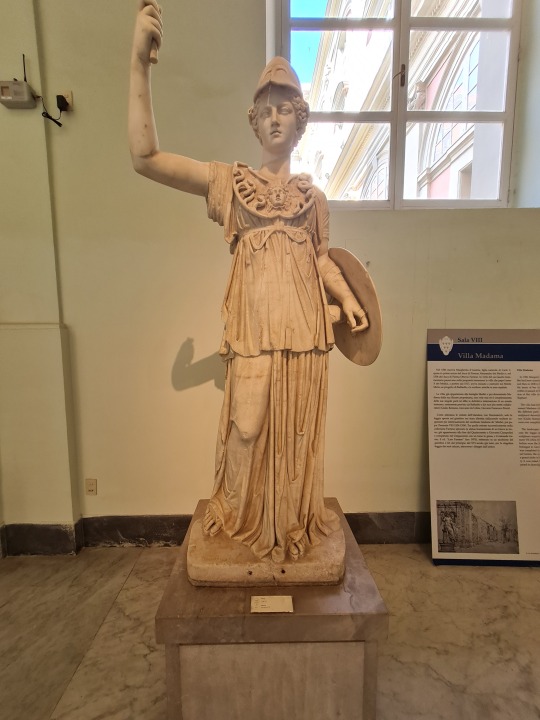
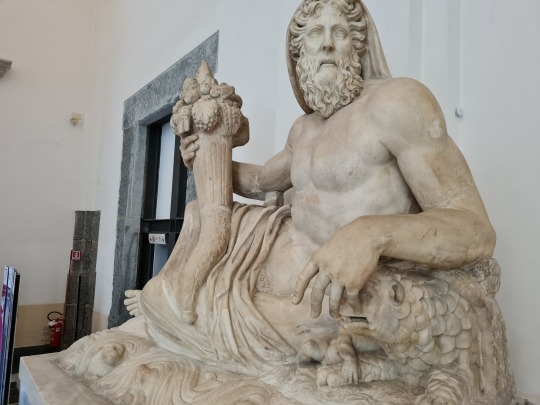
Roman statues of gods in Museo Archeologico Nazionale di Napoli
1: Marble statue of Aphrodite, Dresden-Capitoline style, a Roman copy made 140-160 AD after a Greek original 300-200 BC.
2. Marble statue of Antinous as Bacchus, 2nd century AD.
3. Roman copy of the Athena Parthenos.
4. Roman statue of a river deity (the Nile?), 2nd century AD.
#archaeology#napoli#naples#museum#statues#sculptures#art#history#art history#roman art#roman statue#culture#travel#travel photography#photography#museum photography#art photography#photographers on tumblr#art museum#greek gods#aphrodite#emperor hadrian#antinous#bacchus#athena deity#greek mythology
58 notes
·
View notes
Photo
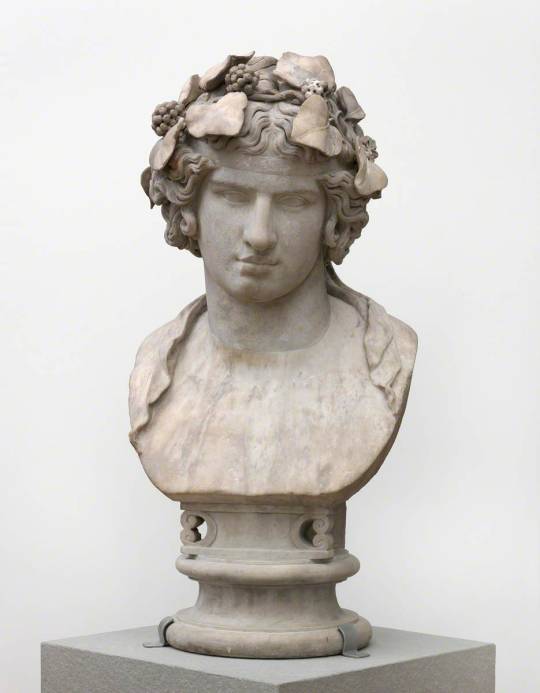
Head of Antinous, Roman, 2nd Century CE
334 notes
·
View notes
Text

Roman Over Life-Size Statue of Antinous, Companion of Emperor Hadrian, as a Hunter
130-138 AD
Nude but for the paludamentun (cloak) over his left shoulder and arm, clasped on his right shoulder. He has the characteristic muscular development of Antinous, his boyish face, and mass of curls bound with a diadem.
Limestone.
H. 152 x w. 51 x d. 31.5 cm.
Antinous, also called Antinoös, (c. 111 – c. 130) was a Greek youth from Bithynia and a favourite and lover of the Roman emperor Hadrian. Following his premature death before his twentieth birthday, Antinous was deified on Hadrian's orders, being worshipped in both the Greek East and Latin West, sometimes as a god (θεός, theós) and sometimes merely as a hero (ἥρως, hḗrōs).
Little is known of Antinous's life, although it is known that he was born in Claudiopolis (present day Bolu, Turkey), in the Roman province of Bithynia et Pontus. He was probably introduced to Hadrian in 123, before being taken to Italy for a higher education. He had become the favourite of Hadrian by 128, when he was taken on a tour of the Roman Empire as part of Hadrian's personal retinue. Antinous accompanied Hadrian during his attendance of the annual Eleusinian Mysteries in Athens, and was with him when he killed the Marousian lion in Libya, an event highly publicised by the Emperor. In October 130, as they were part of a flotilla going along the Nile, Antinous died amid mysterious circumstances. Various suggestions have been put forward for how he died, ranging from an accidental drowning to an intentional human sacrifice or suicide.
Following his death, Hadrian deified Antinous and founded an organised cult devoted to his worship that spread throughout the Empire. Hadrian founded the city of Antinoöpolis close to Antinous's place of death, which became a cultic centre for the worship of Osiris-Antinous. Hadrian also founded games in commemoration of Antinous to take place in both Antinoöpolis and Athens, with Antinous becoming a symbol of Hadrian's dreams of pan-Hellenism. The worship of Antinous proved to be one of the most enduring and popular of cults of deified humans in the Roman empire, and events continued to be founded in his honour long after Hadrian's death.
#Emperor Hadriian#Roman Over Life-Size Statue of Antinous#limestone#limestone statue#ancient artifacts#archaeology#archeolgst#history#history news#ancient history#ancient culture#ancient civilizations#ancient rome#roman history#roman empire#roman art
95 notes
·
View notes
Text




One of the most handsome men in art history: Antinous, lover of Roman emperor Hadrian.
53 notes
·
View notes
Text
GO and Statue Significance
Anyone noticed the statues? Three in particular, which take center stage quite literally in Seasons 1 & 2. We have:
Crowley and his "wrestling" demon and angel, which had pride of place in his flat.
Gabriel's graveyard statue portrait
Aziraphale's marble bust
Because nothing in the set seems accidental and because the statues are so lovingly and prominently displayed, I think it's worth lavishing some attention on them and think about why the characters chose them/like them/display them. This is gonna get academic, for which I'm sorry/not sorry!
Some background on what we know about each statue, with much thanks to @fuckyeahgoodomens for lots of info regarding #1 and #3 statue origins. The wrestling demon and angel is an original work, based upon the Uffizi statue "The Wrestlers." The original is dated to the age of Augustus after a Greek original, which depicted two men engaging in an Olympic sport called Pankration which is described as "an empty-hand submission sport with scarcely any rules." (Make of that what you will).
Gabriel's statue is particularly fascinating. Typical monumental-sized angel statuary with a large cross either has the cross placed above, and the angel below, carrying it, or the angel crouching while embracing the cross. In either composition, it is the cross which is the focal point. In Gabriel's statue, we see the Cross in a non-dominant position, whereas Gabriel's face is the focal point. Also important to note - in traditional angelic statuary, Gabriel is usually depicted as a herald with a horn, and not with a cross at all.
Aziraphale's statue bust original is located in the Louvre, and is called "The Victorious Athlete." It dates from around the time of Crowley's statue, perhaps a century or so later. It is also Roman and it is most likely an idealized figure, not a Greek portrait. Greek-style hair and features came back into fashion in the Roman first century AD, when the Emperor Hadrian fell in love with a Greek youth, Antinous.
My theory is that each statue represents how its owner sees themself and their purpose. In other words, an allegory that allows us to understand the events of S6 and each respective character's actions.
Crowley: Crowley's statue elevates the beauty of eternal tension between dark and light. It's a spiritual and also a very physical, fleshly beauty. More tension. There is definitely sexuality in that piece as well (a few of us have noticed, including Neil!) Each figure pushes the other to their best effort and is, in turn, shown at its best. And each figure is defined by its engagement with the other.
Gabriel: The statue is a clear portrait, unlike the other two (highly unusual for angelic statuary). The whole composition serves to allow the viewer to look, and admire, Gabriel's face. The hope of a resurrection of the dead, as represented by the cross, is completely sublimated to angel portraiture! Pretty extreme stuff for a graveyard, tbh, and reconciles nicely with Gabriel's complete disinterest with the Second Coming.
Aziraphale: His bust is meant to serve as an idealization and embodiment of qualities of the ancient athlete, summed up in the word arete, a term describing "a maximum of ability and potency for action (optimum potentiae); a man’s effectiveness and skill in goodness." Not making this up, btw, this is a widely accepted view of why such idealized statuary was created to represent ancient Olympic athletes - they were literally offerings dedicated to Gods at sanctuaries in Olympia, Delphi and elsewhere.
Such arete encompasses Aziraphale's goal and purpose, and it makes sense that the bust would be displayed so prominently in his bookshop. In S1, it dangled a medallion presented to him from Heaven in 1800. It is interesting that Aziraphale's medallion is missing from the bust in S2 - has it been stripped by Heaven after the events of S1?
Because Crowley has been stripped of his flat, we have no idea what happened to his wrestling angels statue but we no longer have it in S2 as an allegory to access and reference. Is this because he has evolved in his self-definition and that of his relationship with Aziraphale? We cannot know until we have an opportunity to see his flat again, and whether it is still in place.
We know that Gabriel uses his statue as narcissistic reinforcement and a date spot. With his escape from earth, we expect that it will retain little value to him, shed as a narcissist sheds all supply once it is of no use.
But what has happened to Aziraphale's bust in S2 E6? We see Crowley methodically put everything back together exactly as it was after the Ball/Demon incursion, but we don't see the bust go back in place. What is the significance to its absence in the Kiss scene, and the following one with Metatron? I don't know, but I wonder if this is not foreshadowing to indicate that Aziraphale's self-conception is going to be radically altered as a result of his going to heaven. He is not going to come back the same angel, and his allegory is going to have to change with him!
#good omens meta#aziraphale#ineffable husbands#good omens set#the other kind of good omens art#good omens season two#crowley#gabriel#angel and demon wrestling statue#gabriel statue#antinous
74 notes
·
View notes
Text

Charles M. Schulz, Linus van Pelt, 1952
VS
Hermes Pio-Clementino | Belvedere Antinous, second century AD (copy of a bronze by Praxiteles)
#Charles M. Schulz#Linus van Pelt#linus#Peanuts#comic#comic strip#comics#Hermes Pio-Clementino#Belvedere Antinous#vatican#Museo Pio-Clementino#musei vaticani#vatican museums#città del vaticano#marble#statue#sculpture#ancient rome#antinous
56 notes
·
View notes
Note
I Present... Present 🎁
Always appreciate a pun!
You're getting a statue of the deified twink himself - Antinous!

8 notes
·
View notes
Text


..
#archaeology#ancient greece#portrait#marble#queer history#original photographers#türkiye#turkey#antalya#ancient rome#sculpture#statue#antinoos#antinous#hadrian#queer#gay history#gay#antiquity#dark academia#history#academia aesthetic
18 notes
·
View notes
Text

#peoplematchingartworks#antinous#black marble#statues#stefandraschan#photography#contemporaryart#altes museum#berlin
48 notes
·
View notes
Text
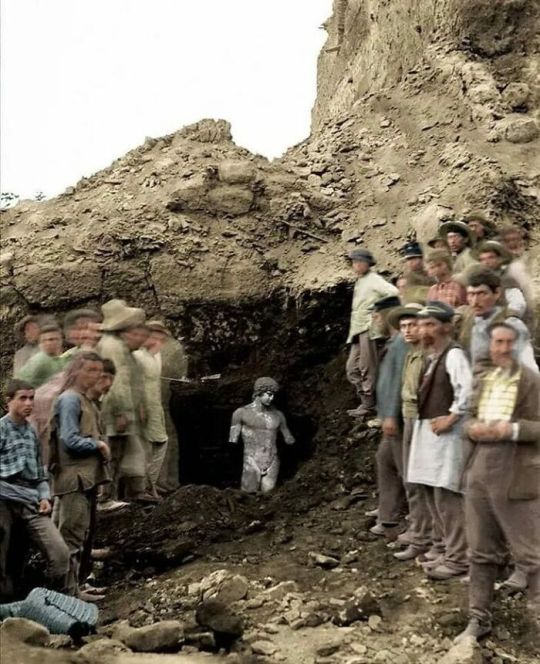
The Discovery Of The Ancient Statue Of Antinous Found In Delphi, Greece During An Excavation In 1894 - Colorized photo.
11 notes
·
View notes
Text
I should've been sleeping before my flight but instead I drew Seb as Antinous :D
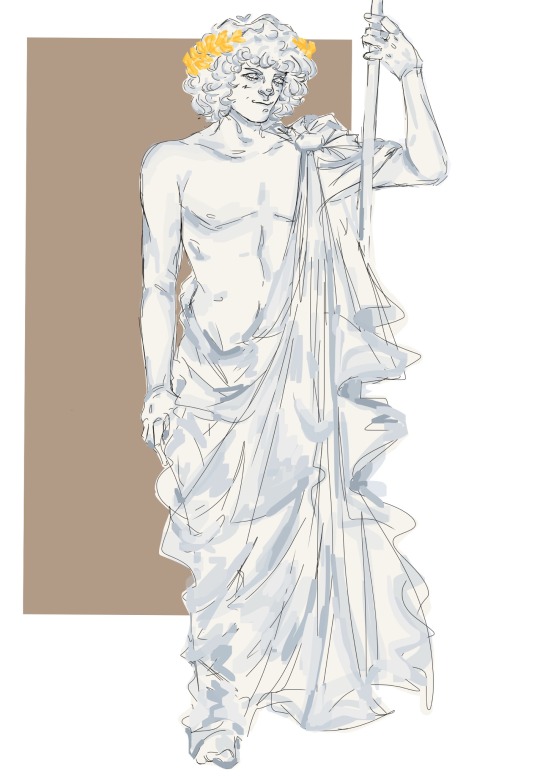
Reference + Commentary:
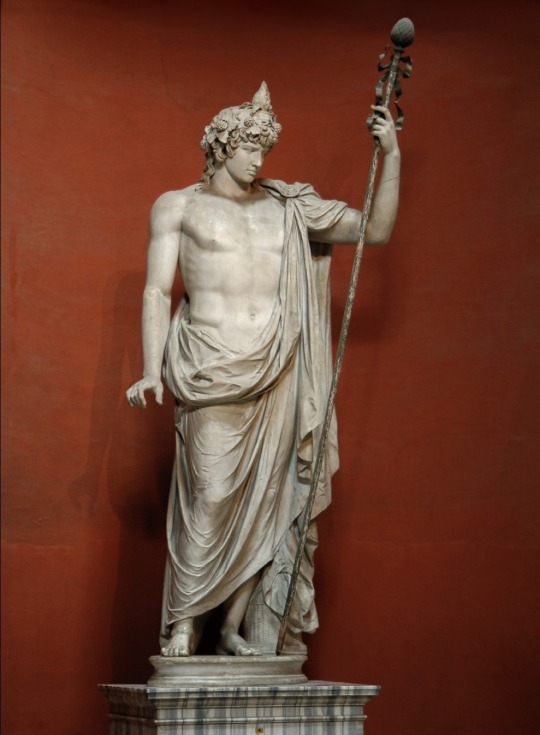
SEB IS MY MODERN DAY ANTINOUS, OKAY!? I WOULD DEIFY HIM IF I COULD!!!
But seriously I spent like an hour obsessing over statues of Antinous just thinking; "holy fuck, he reminds me so much of Seb???"
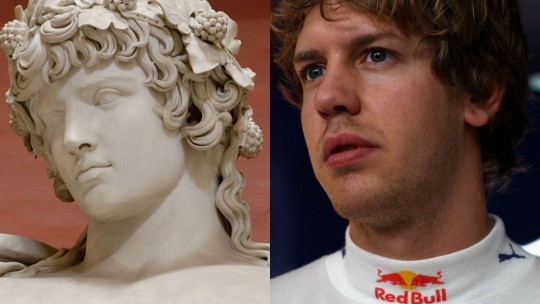

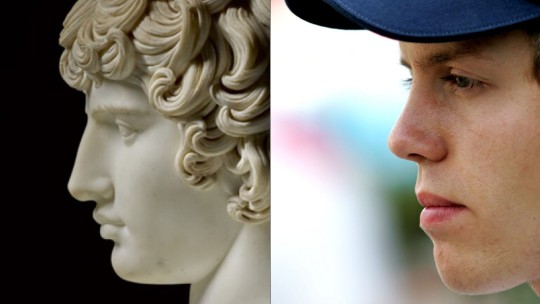
Big, pretty eyes? Check. Magnificent curls? Check. Beautiful side profile? Check. Etc etc.
I read this description of a statue and was instantly struck with "this is so Seb.":
"The body and face of this sculpture are in idealized youth, with plump cheeks and round face, and his hair is usually unkempt. Antinous's hair has also been described as artificial looking, even wig-like, because of how similar the placement of his hair is across statues. His youthful appearance, large eyes, pouting lips, and layered locks of hair over his forehead are some of the iconography that can be used to identify him"(x)
Also which AU of mine is this hmmm. It can be either the Renaissance Muse AU(x) or the random Roman Caesar Fernando AU(x) I drew it with the latter in mind(bcs its basis is literally just Hadrian and Antinous), but it's fun to imagine the Martian version as well!! Maybe an AU of an AU, where Mark is Pygmalion, and Seb is Galatea 🤭🤭
#I DO NOT UNDERSTAND MY BRAIN#cant draw all week when i have limitless free time#and then when i should really be sleeping: boom suddenly can draw something again#i am so tired rn its horrible. my flight got delayed so ill try and get a bit of sleep but yeah....#HAPPY WITH THIS THOUGH#tried to color it regularly and i didnt like it so then i made it more marbley ykow#but now i cant stop thinking of seb as antinous#THERES SO MANY GOOD STATUES AND BUSTS AND THEYRE BOTH SO PRETTY AAAAHHHH#this is just the boy king statue all over again okay.....(nothing can be as good as that tho hahaha)#well yes anyways antinous = seb. thats my new historical thesis#f1#formula 1#sebastian vettel#f1 fanart#formula 1 fanart#catie.art.#sv5#renaissance muse au
70 notes
·
View notes
Text

Happy Birthday to the beautiful Bithynian boy, he who never ages.
Statue of Antinous at Delphi. Photo taken by G Da, courtesy of Wikimedia Commons.
128 notes
·
View notes
Photo
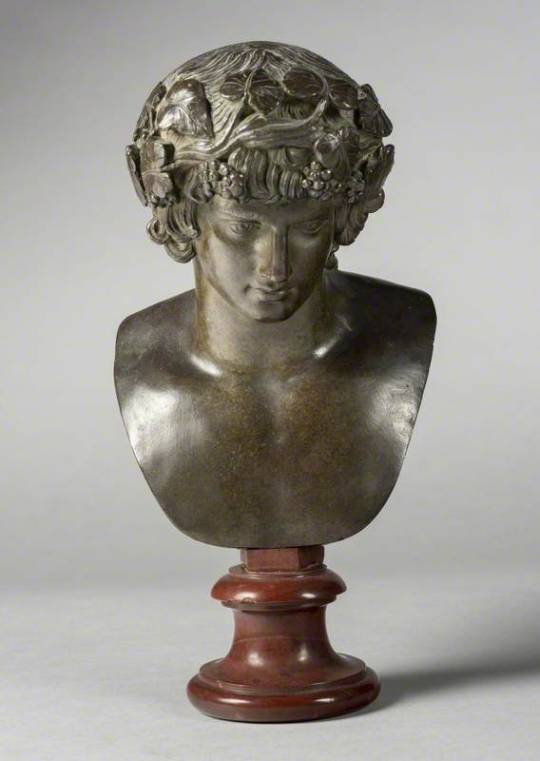
Antinous as Bacchus, Francesco Righetti, 1789
#antinous as bacchus#antinous#Francesco righetti#righetti#1789#1780s#1700s#18th cetnruy#neoclassical#neoclassicism#bust#sculpture#statue#art#bacchus
117 notes
·
View notes